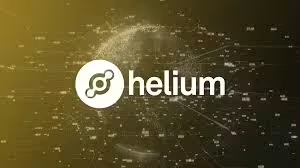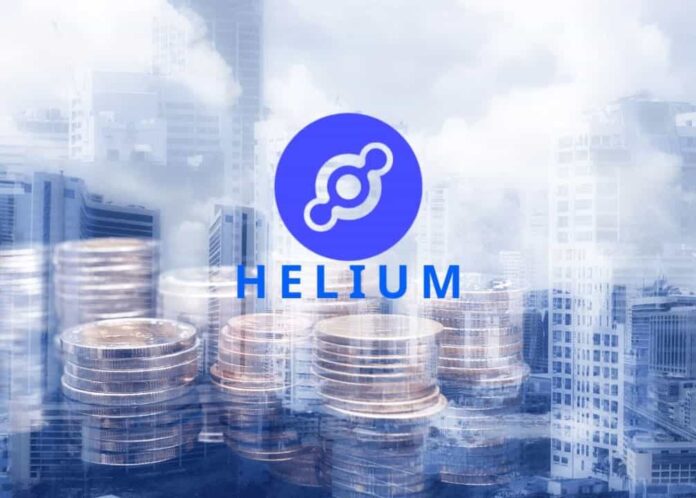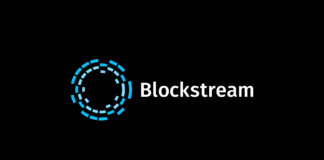In the rapidly evolving landscape of decentralized technology, helium mining has emerged as a vital component, powering a network designed to support the vast growth of Internet of Things (IoT) devices. Helium mining utilizes a unique model that combines blockchain technology with a network of hotspots to create a decentralized, peer-to-peer wireless network. This network, known as the Helium Network, supports IoT devices by providing low-power, long-range data transmission capabilities via LoRaWAN. The importance of helium mining extends beyond mere connectivity; it enables a new paradigm for building wireless infrastructure, challenging traditional models and potentially transforming how we connect devices across the globe.
This article will delve into the intricacies of helium mining, starting with an exploration of the Helium Network and the role of a helium miner. It will elucidate how helium miners, utilizing hotspots, contribute to network growth and security through proof-of-coverage and earn Helium’s native cryptocurrency, HNT tokens, in the process. Further, the discussion will navigate through the setup of a helium miner, the optimization strategies for maximizing helium mining profitability, and the pivotal technologies like LoRaWAN and blockchain that underpin the Helium Network. Lastly, the article will weigh the pros and cons of helium mining, providing a comprehensive overview to assess its relevance and sustainability in the ever-evolving digital ecosystem.
Related Read: Donald Trump’s Profound Support for Bitcoin Mining
What is Helium Network?
Definition and Purpose
The Helium Network is a decentralized, blockchain-based wireless infrastructure that allows individuals and organizations to deploy and operate wireless networks through token incentivization, leveraging the Solana Blockchain for its foundation. It acts as a global, distributed network of hotspots creating public, long-range wireless coverage for Internet of Things (IoT) devices, where hotspots mine and are rewarded in IOT, a cryptocurrency now on the Solana blockchain.
IoT Connectivity
Hotspots within the Helium Network enable people to own and operate a wireless network supporting a wide range of IoT devices, from smart pet collars and home delivery systems to smart bikes and scooters, as well as medical transport and tracking devices. This network uses the LoRaWAN protocol to provide internet connectivity to IoT devices, which is the original sub-network in the Helium ecosystem. Developers and companies around the world rely on the Helium IoT Network for connectivity, enhancing applications across smart cities, agriculture, and logistics.
Architectural Highlights
The Helium Network’s architecture is distinguished by its combination of the Helium blockchain and LoRaWAN wireless protocol, utilizing sub-GHz radio frequency that can reach dozens of miles or kilometers and even connect devices that are inside buildings unlike GPS and cellular signals. This network is built on Open Source technology and governed by its worldwide community with stewardship from the Helium Foundation. The Helium Hotspot, a crucial component of the network, enables anyone to own and operate a wireless network for low-power IoT devices, providing hundreds of square miles of connectivity and transmitting data at a fraction of the cost of a cellular network.
What is a Helium Miner?
A Helium Miner, integral to the Helium Network, functions as specialized hardware designed to validate and secure wireless IoT networks. These miners, often referred to as hotspots, play a pivotal role in the decentralization and expansion of the network by facilitating data transmission over the Helium Network.
Components
The typical Helium Miner is composed of several key components that enable its functionality:
- Antenna: Essential for sending and receiving data packets from IoT devices.
- LoRaWAN Transceiver: Facilitates long-range communication using the LoRaWAN protocol.
- Processor: Manages data validation, encryption, and communication tasks.
- Storage: Provides temporary data storage before relaying information to the blockchain.
- Internet Connectivity: Essential for linking with the Helium blockchain, typically via Ethernet or Wi-Fi.
- Power Supply: Ensures continuous operation of the miner.
Types of Hotspots
In the Helium Network, hotspots are categorized based on their functionality and participation in the network:
- Full Hotspots: Maintain a complete copy of the HNT blockchain and participate in all network activities, including proof-of-coverage and data transfer.
- Light Hotspots: Utilize Light Hotspot software to participate in the network without the overhead of a full blockchain copy. They engage in proof-of-coverage and data transfer activities.
- Data-only Hotspots: Focus solely on transferring data without participating in proof-of-coverage challenges.
Role in the Network
Helium Miners are crucial for providing long-range wireless coverage. They earn Helium tokens (HNT) by expanding The People’s Network coverage and transferring data from IoT devices. The amount of HNT earned correlates with the volume of data transferred and the number of devices served. Additionally, their participation in proof-of-coverage challenges further influences their reward.
By deploying these miners, individuals contribute to a more robust and decentralized network, supporting a wide array of IoT applications from urban to remote areas, thereby enhancing connectivity and network security.
Related Read: Meme Coins: Top 5 Tips on How To Choose the Best to Invest
How Does Helium Mining Work?
Proof-of-Coverage Algorithm
Helium mining relies on a consensus algorithm known as “Proof-of-Coverage” (PoC), which is crucial for verifying the legitimacy of hotspots on the network. This algorithm ensures that hotspots are accurately reporting their locations and the wireless coverage they provide. By leveraging radio frequency (RF) properties, PoC can validate the presence and effectiveness of hotspots without direct physical oversight. This validation process is essential for maintaining the integrity and reliability of the Helium Network.
Mining with Radio Waves
Unlike traditional mining methods that use significant computational power, Helium mining utilizes radio waves, specifically through devices equipped with LoRaWAN transmitters. These devices, known as Helium hotspots or miners, provide extensive wireless coverage and participate in the network by transmitting data. The mining process involves these hotspots performing “challenges” – tasks that confirm their operational status and coverage area. Successfully completing these challenges not only helps secure the network but also earns miners Helium tokens (HNT), with rewards based on the amount of data transmitted and the hotspot’s engagement in PoC activities.
Earnings and Rewards
The reward mechanism in Helium mining is intricately designed to incentivize the expansion of network coverage and the active participation of miners. Hotspots earn HNT by transferring data and participating in PoC challenges, where rewards are distributed based on several factors, including the hotspot’s location relative to others and the density of hotspots in the area. This system encourages the deployment of hotspots in underserved regions, thus enhancing the network’s reach and efficiency. Additionally, the introduction of Oracled PoC has refined the reward distribution process, making it more equitable and aligned with the network’s growth objectives.
Setting Up a Helium Miner

Necessary Equipment
To begin mining Helium, the primary equipment required is a Helium Hotspot, which serves as the main hardware device. Additionally, a SIM card is necessary for cellular data connection, and a reliable power source such as an AC adapter or USB power bank is essential for the hotspot’s operation. The setup costs, including the hotspot, SIM card, and any additional required equipment, typically range from $300 to $400.
Related Read: The Rise of Justin Sun: Unraveling the Wealth and Influence of the TRON Founder
Step-by-Step Guide
- Download the Helium App: Start by downloading the Helium app from the app store, which provides the necessary tools to begin mining.
- Generate a Seed Phrase: The app will generate a 12-word seed phrase, crucial for backing up your Helium wallet.
- Set Up the Hotspot Miner: Locate the plus (+) symbol in the app to add your hotspot and initiate the connection process. Use the small pin key included with your miner to enable Bluetooth, allowing connection via your smartphone.
- Configure Wi-Fi: In the app, select available network options to connect your hotspot to Wi-Fi. Ensure the hotspot is placed in an open space, ideally beside a window, to avoid signal disruption.
- Antenna Setup: Install the antenna at a high elevation to enhance signal reception, which directly impacts mining performance. Choose an antenna with appropriate strength to maximize signal reception.
Common Issues and Troubleshooting
- Firmware Updates: Ensure port 443 is open for firmware updates on Original Helium Hotspots. Check with the maker for specific port requirements.
- Internet Connectivity: Verify the internet connection using other devices on the same network. If connectivity issues persist, contact your Internet Service Provider.
- Cable and Router Setup: Ensure all cables, especially Ethernet, are securely connected. For Wi-Fi issues, verify the security password and consider power cycling your router if problems continue.
- Firewall and NAT Configuration: Adjust firewall settings and NAT types as Helium Hotspots may not function properly if behind a restrictive firewall or incompatible NAT type.
By following these detailed steps and troubleshooting common issues, you can effectively set up and maintain your Helium Miner, contributing to the Helium Network while earning HNT tokens.
Optimizing Your Helium Miner Setup
Antenna Placement
Optimizing the placement of the antenna is crucial for maximizing the effectiveness of a Helium Miner. The antenna should ideally be positioned outside to avoid obstructions like walls and windows that can block radio waves. Elevating the antenna above other obstacles and ensuring it has a clear view of as much area as possible can significantly enhance its performance. It is noted that an antenna at a higher elevation, such as 120 feet, can effectively transmit with the power of 8 to 10 times more than one at 35 feet. Therefore, the placement of the antenna, not just its quality, plays a pivotal role in the miner’s efficiency.
Firmware Updates
Regular firmware updates are essential for maintaining the efficiency of Helium Miners. These updates can include performance enhancements, security patches, and bug fixes that are crucial for the miner’s operation. Manufacturers like RAK often release updates for their devices, such as the RAK V2 Helium Miner, which can be downloaded from their official websites or through support channels. Users should check for these updates regularly to ensure their device operates at peak efficiency.
Density Considerations
The density of Helium Hotspots in an area significantly affects earnings. Optimal hotspot density can prevent earnings dilution from too many nearby hotspots. Using tools like Uber’s H3 map can help operators determine the ideal density for their location, which varies from urban to rural settings. Understanding and adjusting hotspot placement according to these density metrics can lead to maximized earnings from mining activities.
By focusing on these key areas, operators can enhance the performance and profitability of their Helium Mining setups.
Pros and Cons of Helium Mining
Advantages
Helium mining offers several enticing benefits, particularly for those interested in decentralized networks and passive income opportunities. By setting up and operating a helium miner, individuals earn Helium tokens (HNT), which can be converted into other cryptocurrencies or fiat currencies, providing a steady stream of passive income. Additionally, businesses can benefit from improved connectivity and reduced downtime for IoT devices, enhancing operational efficiency. The Helium Network’s low-power and low-cost infrastructure also presents a more sustainable alternative to traditional network technologies, significantly reducing the carbon footprint.
Challenges
Despite its advantages, helium mining faces several challenges that potential miners must consider. The initial investment in mining hardware can be substantial, and the technological landscape’s rapid evolution could render current equipment obsolete. Increased competition from a growing number of hotspots may also reduce individual mining rewards. Furthermore, the regulatory landscape is still evolving, and changes could impact the profitability and legality of helium mining operations. Market volatility in cryptocurrency could affect the value of earned HNT, influencing overall profitability.
Future Prospects
The future of helium mining looks promising with the network’s expansion and its migration to Solana, which offers enhanced support and integration with a wide array of applications. This transition is expected to improve network speed, scalability, and introduce smart contract capabilities, potentially increasing the utility and value of HNT. However, the network’s growth could also lead to challenges such as increased congestion and latency, which may affect the efficiency and responsiveness of the Helium Network. As the network evolves, continuous adaptation and optimization of mining operations will be crucial for maintaining profitability and relevance in the rapidly changing digital landscape.
Conclusion
Helium mining embodies the cutting-edge intersection of blockchain and decentralized wireless technology, offering a foundational pillar for the growth and support of Internet of Things (IoT) devices globally. Through the exploration of the Helium Network, the function and setup of helium miners, and strategic optimization techniques, we’ve clarified not just the mechanism of helium mining but also illuminated its profound implications for constructing a new archetype of wireless infrastructure. The transition of the Helium Network to the Solana blockchain marks a significant step towards enhancing its scalability and utility, underscoring the dynamism within the realm of decentralized networks and forecasting a promising trajectory for helium mining and its contribution to IoT connectivity and blockchain ecosystem.
Despite the enticing prospects, helium mining does not come without its set of challenges, from initial financial outlay to the continuous evolution of technology that necessitates regular adaptations and optimizations. However, the advantages such as the potential for passive income, enhanced IoT device connectivity, and a sustainable alternative to traditional network models offer compelling reasons to engage in helium mining. As the network grows and technology advances, further research and development are vital for addressing emerging challenges and harnessing the full potential of helium mining. Thus, the journey of helium mining remains an exhilarating frontier within the decentralized technology space, promising innovative solutions and opportunities for a connected future.
FAQs
1. What is the function of a Helium miner?
Helium miners, also known as hotspots, use LoRaWAN transmitters to provide long-range wireless coverage. By setting up these hotspots and expanding the coverage of The People’s Network, miners can earn Helium tokens (HNT).
2. Is it still profitable to mine Helium?
Yes, it remains profitable to mine Helium. Helium Farm advocates that with their innovative mining strategies and lucrative plans, mining Helium is not only feasible but also highly profitable.
3. What is the average income from a Helium miner?
The profitability of a Helium miner can be gauged by the return on investment (ROI), which calculates how long it takes to recover the initial cost. For instance, as of January 2022, purchasing a Helium miner for $1200 and earning an average of $4 per day would allow you to recoup your investment in under a year.
4. How does one operate a Helium miner?
To start using a Helium miner, follow these steps:
- Download the Helium App and create an account.
- Generate a 12-word seed phrase.
- Verify the order of your seed phrase.
- Set a six-digit PIN for your account.
- Add your Helium Hotspot Miner to the app.
- Connect your Hotspot Miner via Bluetooth to your router.
- Position your miner optimally for best performance.













